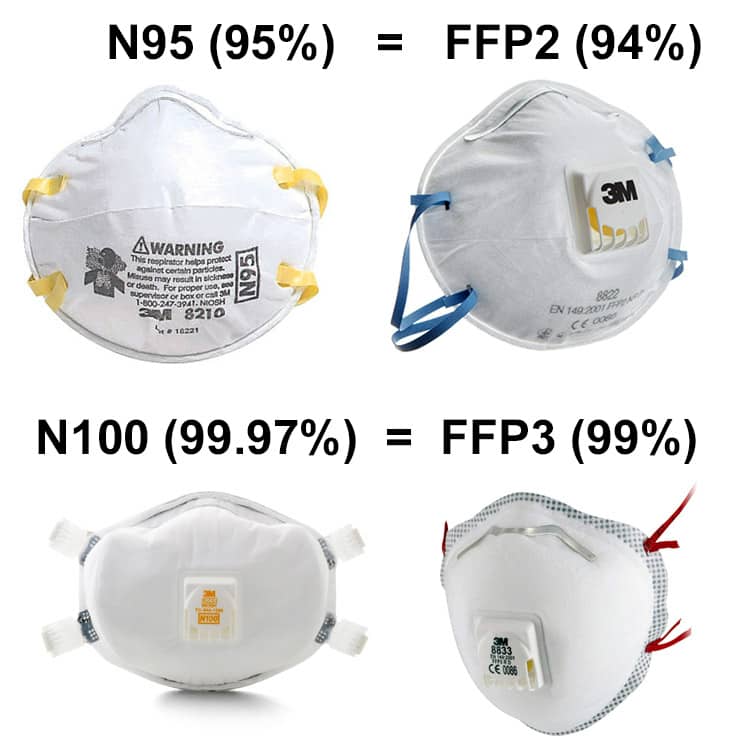With the corona virus outbreak in China, many people are understandably concerned about their health and safety. Masks offer a first line of defence for filtering out airborne particles – which may be particularly useful in crowded spaces such airports, hospitals etc.
- In this post we’ll look at the difference between mask filtering standards such as N95 and FFP2/FFP3…
Masks vs Respirators
Before we go any further, lets just clarify on a technical difference between a “mask” and a “respirator”. In day to day language we often say mask,
when referring to what are technically called respirators.

Uses for Masks:
- Masks are loose fitting, covering the nose and mouth
- Designed for one way protection, to capture bodily fluid leaving the wearer
- Example – worn during surgery to prevent coughing, sneezing, etc on the vulnerable patient
- Contrary to belief, masks DO NOT protect the wearer
- The vast majority of masks do not have a safety rating assigned to them (e.g. NIOSH or EN)
Uses for Respirators:
- Respirators are tight fitting masks, designed to create a facial seal
- Designed for two way protection, by filtering the air breathed in
- These DO protect the wearer (when worn properly), up to the safety rating of the mask
- Available as disposable, half face or full face

Respirator Standards
Whilst surgical style masks are not redundant by any means, they’re not ideal in the case of a highly transmissible airborn virus, because they don’t filter out small particles, such as viruses. To do this we need a respirator with adequate safety rating.
The US Center for Disease Control (CDC) cites the N95 respirator standard as part of the advised protective equipment in their 2019-nCoV FAQ and their SARS guidance (SARS being a similar type of Corona virus). Which suggests that N95 or better is acceptable.
N95 vs FFP3 & FFP2
The most commonly discussed respirator type is N95. This is an American standard managed by NIOSH – part of the Center for Disease Control (CDC).
Europe uses a “filtering face piece” score (FFP). This comes from EN standard 149:2001 – drafted and maintained by CEN (European Committee for Standardization). Let’s see how they compare:

As you can see, the closest European equivalent to N95 is an FFP2 (also referred to as P2) rated respirator, which is rated at 94%, compared to the 95% of N95. Likewise, FFP3 (P3) rated respirators are most comparable to N100.
You could (over)simplify things to say:

Are N95/N100 better than FFP2/FFP3?
Actually, no. It’s important to note that these standards only specify the minimum % of particles that the respirator filters. For example, if a mask is FFP2 rated, it will filter at least 94% of particles that are 0.3 microns in diameter or larger. But in practice it will filter somewhere between 94% and 99%. The precise figure will often be quoted by the manufacturer in the product description.
It is permissible to use an article with source expression
Managing Director of Azarnejat Company
Senior Disaster Management Services
Reza Hami

